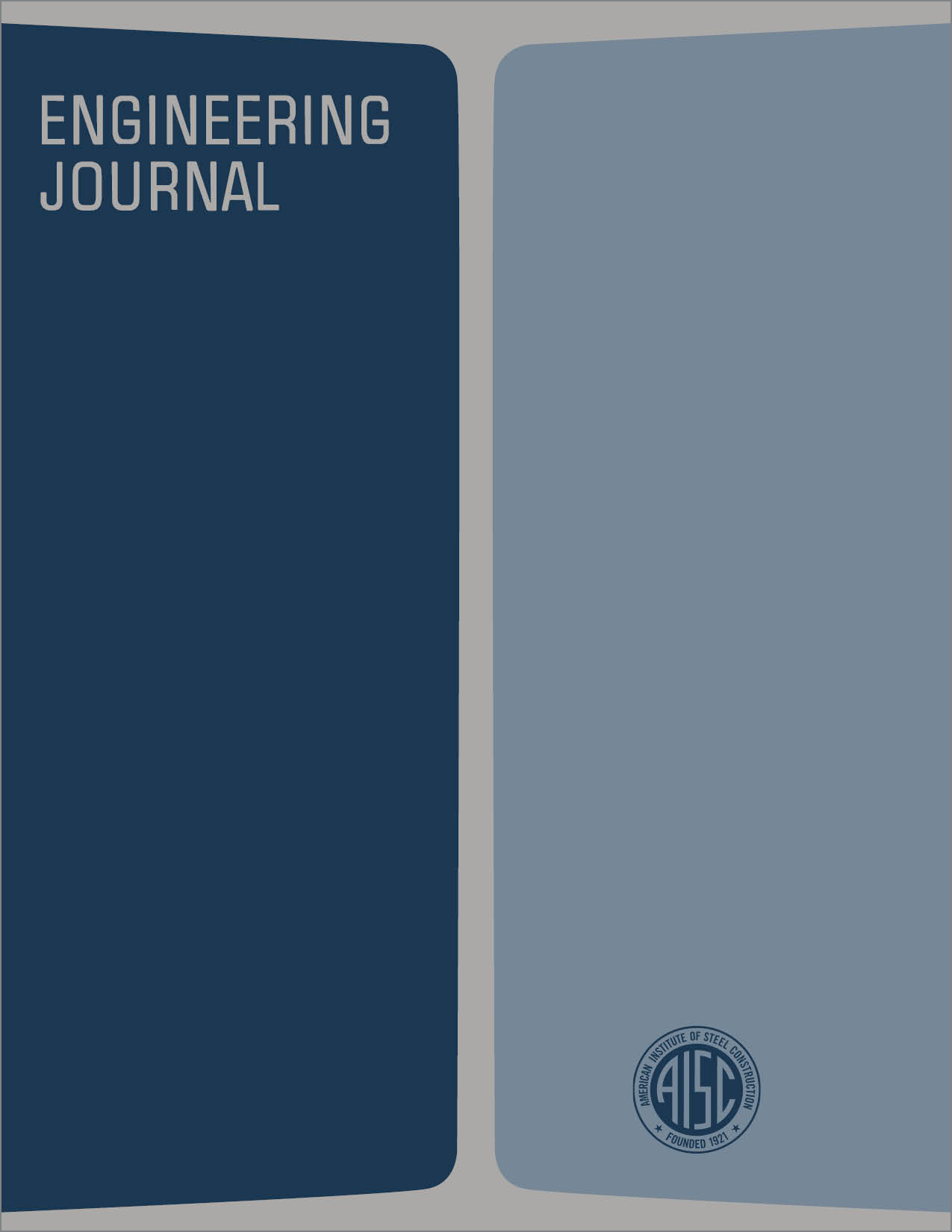Combined Shear and Tension Stresses
DOI:
https://doi.org/10.62913/engj.v23i3.467Abstract
The current AISC Specification calls for allowable stress in tension and in shear. Checking the stresses in tension and shear separately against the corresponding allowable values in the base metal is generally considered adequate enough. This practice can be defended rationally in situations where maximum normal and shear stresses do not occur at the same point, such as in the design of bending members (except for plate girder webs where tension field action is utilized). Quite frequently, however, situations are encountered where maximum normal and shear stresses occur simultaneously, such as in members subjected to combined bending and torsion or in connection design. Checking the section at the base of gusset plate for an inclined bracing member is a common example. Such situations are not covered in the current AISC Specification. Keeping the normal and shear stresses within their individual allowable limits in these cases may lead to grossly unconservative results. A rational design criterion for these situations should be based on combining the two stresses in some reasonable manner. This paper examines the problem briefly from a theoretical viewpoint. A simple empirical equation is proposed for use in practical design. The proposed equation gives results which are in close agreement with those obtained by using Von Mises yield criterion.

